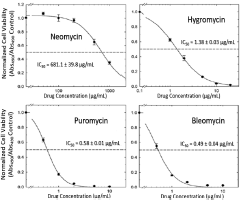Competitive Advantages
- A reverse genetic approach to unveiling virulence factors
- Process works with multiple selectable markers
- Multiple transfection rounds with wider range of genes
Summary
Our researchers have developed a transfection vector as a novel genetic tool for a reverse genetic approach to unveil virulence factors and potential drug targets within these microbes. Identification of three independent selectable markers, hygromycin, puromycin and bleomycin for N. fowleri would allow for multiple transfection rounds with different genes. This is helpful since N. fowleri has a natural resistance to neomycin, a bacterial antibiotic found naturally in the body, rendering it as an ineffective selection marker for amoebas. Transfection of amoeba has been difficult and this innovative technology would be a solution. The invention of pNfEGFP-Hyg as a transfection vector lays the foundation for the cellular and molecular characterization of potential drug targets in these amoebae. A better understanding of their virulence factors can lead to new drug targeting applications within these organisms, and can help combat the pandemic these microbes cause.

IC50 Values of N. fowleri to Neomycin and Independent Markers: Hyg, Puro and Ble’
Desired Partnerships
- License
- Sponsored Research
- Co-Development